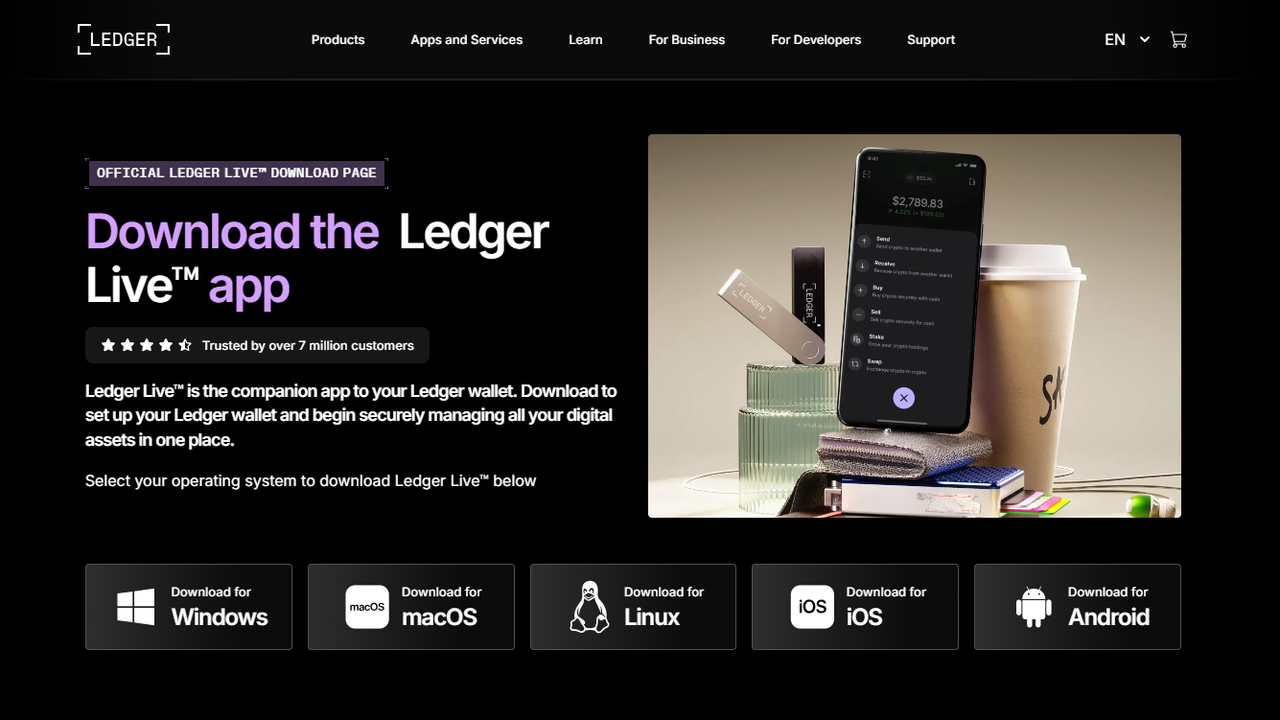Ledger.com/Start — The Definitive Beginner’s Guide to Secure Crypto Ownership
A step-by-step, human-friendly walkthrough to set up your Ledger hardware wallet, master Ledger Live, and adopt practical security habits that protect your coins, tokens, NFTs, and on-chain identities.
Start Here: What Ledger.com/Start Actually Does
Ledger.com/start is not just an instruction page — it’s the official onboarding portal that ensures you download authentic Ledger Live software, follow verified setup steps, and receive firmware updates securely. Think of it as the white-glove welcome for anyone who wants true crypto ownership through self-custody.
Who should follow this guide?
Beginners who never owned a hardware wallet, intermediate users migrating from exchanges, or experienced holders who want a security refresher. This guide covers hardware setup, recovery phrase best practices, Ledger Live features, and practical safety routines for everyday use.
Quick glossary (terms you'll meet)
Private key · Recovery phrase · Cold storage · Ledger Live · DeFi · NFT
Essentials at a glance
- Never enter recovery words online.
- Always init via Ledger.com/start to avoid phishing.
- Ledger Live is your management app — install only from the official site.
- Write the 24-word phrase on the supplied card (multiple copies, stored separately).
Step-by-step: Setting up your Ledger via Ledger.com/Start
1. Purchase & verify
Buy from Ledger or an authorized reseller. Check seals and serial numbers; tampering is rare but important to spot.
2. Visit Ledger.com/Start
This page links to verified Ledger Live downloads and the latest setup instructions — avoid bookmarks that look unfamiliar or contain extra characters.
3. Initialize your device
Follow on-screen steps to create a PIN and generate your 24-word recovery phrase. Confirm the phrase on the device — never on a computer screen.
4. Install apps in Ledger Live
Open Ledger Live, add the blockchains you need (Bitcoin, Ethereum, Solana) and install their apps to the device. Transactions require physical confirmation on your Ledger.
These steps convert your device from an inert USB to a security-first cold wallet. The recovery phrase is the fallback key — treat it like the combination to a safe you own, not a password you type.
Ledger Live: Your Wallet Control Center
Ledger Live connects to your device without exposing private keys. Use it to check balances, send & receive funds, buy crypto, swap assets, and stake supported coins. Below are practical features you’ll use frequently:
- Portfolio dashboard — aggregated balances across accounts and chains.
- Manager — install/uninstall blockchain apps on-device.
- Market & Explorer — pricing, charts, and transaction history.
- Receive/Send workflow — addresses displayed on your Ledger for verification.
Remember: every transaction initiated in Ledger Live must be approved on the physical Ledger device — that on-device confirmation is a powerful safety gate against remote hacks.
Security checklist
- Use a strong PIN (avoid simple repeats).
- Store recovery phrase offline in two secure locations.
- Enable firmware updates only from Ledger.com/start.
- Beware of unsolicited messages asking for your words or device access.
Comparison: Ledger Nano X vs. Nano S Plus (practical view)
| Feature | Nano X | Nano S Plus |
|---|---|---|
| Connectivity | Bluetooth + USB-C — mobile-friendly | USB-C — best for desktop users |
| App capacity | High — many coins at once | Moderate — tidy & cost-effective |
| Battery | Yes — rechargeable | No — USB powered |
| Best fit | Active traders, mobile users | Casual holders, desktop-first users |
Beyond Storage: Staking, DeFi & NFTs
Ledger devices pair with Ledger Live and trusted third-party dApps to let you participate in staking (earning rewards by supporting networks), interact with decentralized finance (DeFi) protocols, and manage NFTs securely. The principal advantage: your private keys never leave the device — signing happens locally while the web interface merely requests confirmations.
- Stake ETH or other PoS coins for passive yield.
- Use Ledger with DEXs (decentralized exchanges) via wallet connectors.
- Safely display and transfer NFTs held on Ethereum or compatible chains.
Common Questions — Practical Answers
Q: Can someone steal my crypto if they have my device?
Only if they also know your PIN and recover phrase. PIN prevents casual access; the 24-word recovery phrase is the ultimate fallback — keep it offline and split across secure locations.
Q: Is Ledger Live mandatory?
No, but it's the recommended, safest, and user-friendly way to manage accounts. Alternatives exist but often lack Ledger Live’s integrated protections.
Q: What if Ledger stops supporting a coin?
You can still access funds using compatible wallet software that supports the chain and your recovery phrase (or via an advanced recovery method) — this is why self-custody matters.
Quote “Security in crypto is less about paranoia and more about predictable routine — a reliable setup, verified downloads, and the discipline to keep secrets offline.”— A practical security approach for self-custody
Final Checklist Before You Finish Setup
- Confirmed device authenticity and sealed packaging.
- Downloaded Ledger Live from Ledger.com/start and verified version.
- Created and safely stored 24-word recovery phrase (never digitized).
- Tested a small transaction to verify addresses and confirmations.
- Installed only required blockchain apps and removed unused ones.
- Added a second secure backup location for your recovery phrase.
Takeaway — Why Ledger.com/Start Matters
Ledger.com/start is the first guardrail between you and the wider internet. It guides you through secure setup, reduces phishing risks, and makes Ledger Live accessible. When you pair a Ledger hardware wallet with disciplined habits — never sharing your recovery phrase, verifying downloads, and using on-device confirmations — you convert complex cryptography into practical, everyday security.
Own your keys. Own your future. Begin at ledger.com/start.
